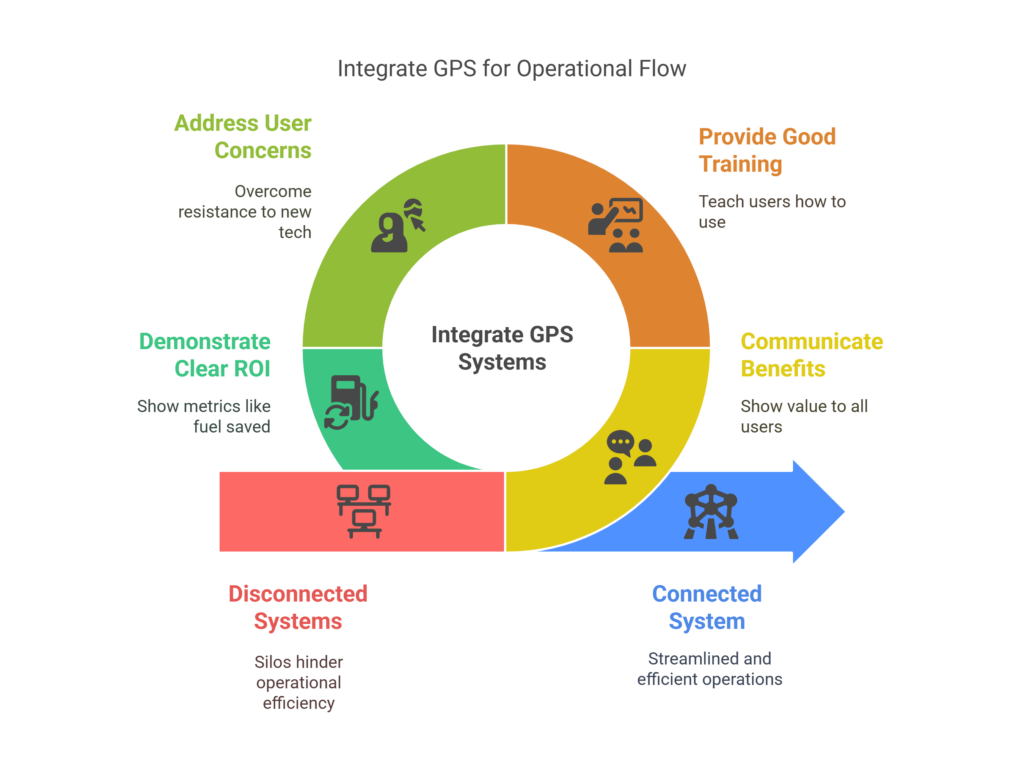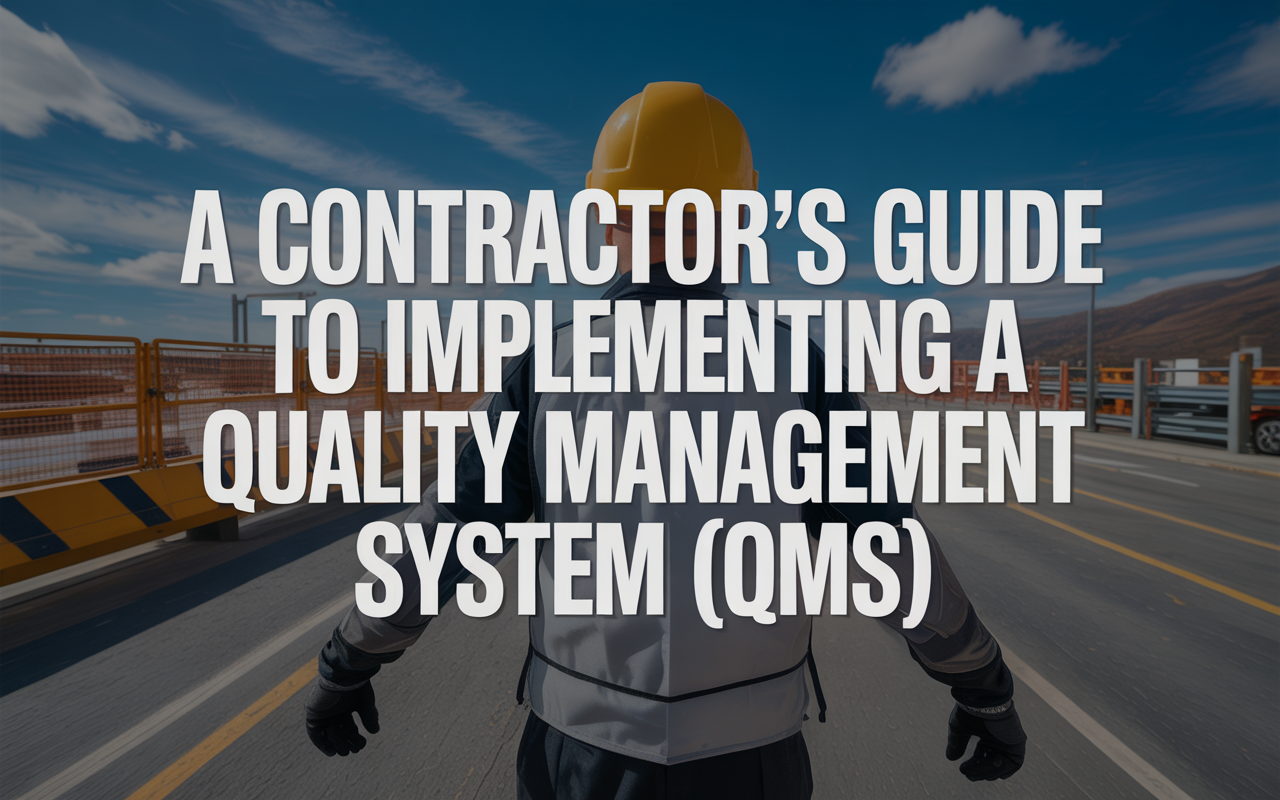Fleet costs can get out of hand quickly when you lose sight of where your vehicles are, how they’re being driven, and what’s happening on the road. Why do so many companies still lean on yesterday’s methods—spreadsheets, endless phone calls, and sheer guesswork—when GPS fleet telematics delivers clear answers in real time? It’s a head-scratcher! 🤔
For operators managing a fleet of vehicles, every minute and every mile truly counts. This piece explains precisely what GPS fleet telematics is, how it reshapes fleet management, and the practical benefits you can anticipate. You’ll understand: how real-time vehicle data slashes operational costs, why proactive safety measures can lead to lower insurance bills, and the features that top-tier fleet managers absolutely demand. What you need to get right now: modern telematics isn’t merely location tracking—it’s actionable intelligence that powers smarter business decisions.
What Is GPS Fleet Telematics?
So, what’s the deal with GPS fleet telematics? At its core, it’s a brilliant fusion of GPS tracking technology, onboard vehicle diagnostics, and wireless communication. This combination works together to provide a continuous stream of real-time data about your vehicles. This includes their exact location, the behavior of the person behind the wheel, and the overall status of the vehicle itself. Think of it as having a direct line to every vehicle in your fleet, all the time.
These sophisticated systems are designed to collect a wealth of information from each vehicle. This data is then transmitted wirelessly to a central hub. From there, fleet managers can access, analyze, and use this information to make genuine operational improvements. It’s about turning raw data into meaningful action.
“It combines GPS tracking, onboard diagnostics, and wireless communication to provide real-time data on vehicle location, behavior, and status.” Simply Fleet
How GPS Fleet Telematics Works
Let’s peek under the hood, shall we? 🛠️ The magic of GPS fleet telematics comes from several key components working in concert. You’ve got GPS devices for pinpointing location, various sensors collecting data (like speed or harsh braking), SIM cards for communication over cellular networks, an interface with the vehicle’s engine computer (often an OBD-II port), and specialized communication software that ties it all together. Each part plays a vital role in gathering and sending critical information.
The data flow is pretty straightforward but incredibly powerful. As vehicles operate, the onboard telematics unit continuously gathers information—location coordinates, diagnostic trouble codes, speed, idling time, and other safety-related events. This data is then packaged and transmitted, usually via cellular or satellite networks, to a secure, cloud-based platform. Fleet managers can then log into this platform using a web browser or mobile app to see everything in one place.
“Telematics systems represent the ideal technology to incorporate into tracking systems that include GPS tracking and fleet communication software capabilities.” Acadia Insurance
Key Benefits of GPS Fleet Telematics
One of the biggest wins with GPS fleet telematics is a surge in operational efficiency. Imagine crafting the most effective routes automatically, significantly cutting down on vehicle idle time, and seeing a real jump in overall productivity. Manual processes, like paper logs, can be digitized, saving time and reducing errors. Getting instant data about your operations means you can make sharp decisions that help control your operating expenses. 📈
“Getting real-time data about your business allows you to make informed decisions that can help reduce your operating costs.” MiX Telematics
Fuel savings are another major plus! ⛽ Telematics systems help identify roundabout or inefficient routes, allowing for better planning. They shine a light on excessive idling, which burns fuel for no good reason, and help encourage driving habits that are much more fuel-efficient, like smoother acceleration and braking. The result is often a notable improvement in efficiency, which translates directly into increased productivity and lower fuel bills.
“The bottom line is an improvement in efficiency translates into a dramatic increase in productivity.” Acadia Insurance
And let’s not forget about safety – it’s paramount. GPS fleet telematics offers an incredible ability to monitor driver behaviors. Systems can track speed, braking patterns, and instances of aggressive maneuvers. When risky actions are detected, alerts can be sent, and this data can be used for targeted coaching and training. This proactive approach can reduce accidents, protect your drivers and assets, and often lead to lower insurance premiums. Peace of mind is a wonderful thing! 🛡️
“One of the primary benefits of telematics is its ability to monitor driver behavior. GPS vehicle tracking devices can track speed, braking patterns, and instances of aggressive driving.” WEX
Real-Time Vehicle Tracking and Route Optimization
Knowing where your vehicles are at any given moment is a game-changer. Real-time GPS tracking provides fleet managers with immediate visibility. You can see if vehicles are sticking to their assigned routes, get accurate ETAs for customers, and make quick adjustments if unexpected delays pop up. This level of oversight means you’re always in the loop and can respond proactively to any situation on the ground.
Beyond just knowing locations, this technology powers smart route optimization. By analyzing historical data, current traffic conditions, and job schedules, telematics software can plan the most efficient routes for your drivers. This not only speeds up delivery or service times but also cuts down on mileage, fuel consumption, and vehicle wear and tear. Shorter routes mean happier customers and healthier operating expenses.

Improving Driver Behavior and Fleet Safety
GPS fleet telematics acts like a silent co-pilot, providing objective data on how vehicles are being operated. This information is invaluable for identifying unsafe driving habits such as speeding, rapid acceleration, harsh braking, or even signs of distracted driving. With this insight, you can move away from guesswork and implement targeted coaching sessions for drivers who might need a bit of guidance.
The positive impact on safety is clear. By addressing risky driving behaviors promptly, the chance of accidents can be substantially reduced. This creates a safer working environment for your drivers and protects your valuable vehicles and cargo. What’s more, many insurance companies recognize the safety benefits of telematics and may offer discounts on premiums for fleets that adopt these systems. It’s a win-win for safety and your budget. ✅
“By addressing risky driving behaviors promptly, the likelihood of accidents can be significantly reduced.” Trackstar
Fuel Management and Cost Control
Fuel is often one of the largest expenses for any fleet. GPS telematics platforms give you the tools to monitor fuel consumption with impressive detail. You can see how much fuel each vehicle is using, identify trends, and spot anomalies that might indicate issues like fuel theft or mechanical problems. By optimizing routes and reducing unnecessary mileage, you directly cut down on fuel waste.
The system also helps flag and reduce costly habits like extended idling periods. The financial impact of tackling these inefficiencies can be quite substantial. Companies that actively use telematics data for fuel management often achieve measurable savings, seeing a direct improvement in their bottom line. Every drop of fuel saved contributes to a more profitable operation. 💰
“Telematics can help monitor fuel consumption and identify areas where savings can be made.” WEX
Maintenance Management and Vehicle Longevity
Keeping vehicles in top condition is crucial for reliability and avoiding costly, unexpected breakdowns. GPS fleet telematics can automate much of this process. Systems can provide alerts when a vehicle is due for service, based on actual mileage, engine hours, or even by detecting diagnostic trouble codes (DTCs) from the engine. This allows for proactive, preventative maintenance scheduling.
This approach to maintenance does wonders for vehicle lifespan and overall fleet reliability. Addressing small issues before they become big problems means fewer roadside emergencies, less downtime, and vehicles that stay in service longer. A well-maintained fleet is a more dependable and cost-effective fleet. Your vehicles will thank you!
“Telematics systems can provide alerts when a vehicle is due for service, based on mileage, engine hours, or diagnostic trouble codes.” Simply Fleet
Core Features to Look for in a GPS Fleet Telematics Solution
When you’re evaluating GPS fleet telematics providers, there are some essential features you’ll want to ensure are on offer. At the top of the list is, of course, accurate real-time GPS tracking. Beyond that, look for robust driver behavior monitoring, automated maintenance alerts, geofencing capabilities, comprehensive reporting tools, and the ability to integrate with other business systems you might already use.
More advanced features can further support better decision-making and operational control. Think about things like video telematics for incident reconstruction, temperature monitoring for refrigerated cargo, or advanced analytics that provide deep insights into fleet performance. A good telematics offering should also be able to scale with your business as it grows, adapting to your changing needs.
“Fleet Telematics offers GPS tracking features that give you insight into how well your fleet is optimized so that you can make better decisions about what to change or improve.” MiX Telematics
Geo-fencing and Asset Security
Geo-fencing is a super useful feature that allows fleet managers to set up virtual perimeters or digital boundaries around real-world geographic areas. You can create a geo-fence around a customer’s location, a job site, a yard, or even an entire city. When a vehicle enters or exits one of these predefined zones, an instant alert can be triggered. This is fantastic for confirming arrivals, monitoring adherence to approved areas, preventing unauthorized vehicle use, and bolstering asset security against theft. 🗺️
“With MiX’s GPS Tracking solutions, fleet managers can define custom geofences based on specific geographic boundaries.” MiX Telematics
Telematics Data Analytics: Turning Data into Action
All the data collected by a GPS fleet telematics system is incredibly valuable, but only if you can make sense of it. That’s where data analytics comes in. Modern telematics platforms offer intuitive dashboards that present key metrics in an easy-to-understand format. They allow for trend analysis over time and generate detailed reports that turn raw streams of data into concrete business improvements. This analytical power helps you spot opportunities, identify problems early, and make data-driven decisions. 💡
Integrating Telematics with Existing Fleet Operations
To get the most out of GPS fleet telematics, it’s often beneficial to integrate it with other systems your business relies on. Think about linking it with your dispatch software for seamless job allocation, your maintenance programs for streamlined upkeep, HR systems for driver performance reviews, or even accounting software for accurate job costing and billing. This creates a more connected and efficient operational flow.
Introducing any new technology requires a thoughtful approach to onboarding. It’s important to clearly communicate the benefits to both drivers and managers, provide good training, and address any concerns to overcome potential resistance. Demonstrating the return on investment (ROI) through clear metrics—like fuel saved or accidents reduced—can help everyone see the value and embrace the change.

Case Studies: Telematics in Action
Let’s imagine a local delivery company that was struggling with high fuel costs and customer complaints about late arrivals. After putting in place a GPS fleet telematics system, they were able to optimize delivery routes, dramatically reduce vehicle idling time, and monitor driver speeds. Within six months, they saw a 15% reduction in fuel expenses and a significant improvement in on-time delivery rates, leading to happier customers.
Consider another example: a construction firm with a large fleet of valuable equipment. They faced challenges with unauthorized equipment use outside of work hours and occasional theft. By using geo-fencing and real-time alerts from their telematics provider, they were able to quickly identify and recover a stolen piece of machinery, saving tens of thousands of dollars. They also curbed unauthorized usage, reducing wear and tear on their assets. These are common industry challenges where telematics provides measurable, positive outcomes.
How Nektar.io Elevates GPS Fleet Telematics
When you’re looking for a GPS fleet telematics partner, you want a provider that truly understands the needs of modern fleets. That’s where Nektar.io comes in. We offer a distinctive approach, focusing on a powerful yet user-friendly platform. Our feature sets are comprehensive, covering everything from precise real-time tracking and in-depth driver behavior analytics to proactive maintenance scheduling and seamless data integration capabilities. Plus, our customer support team is always ready to assist you.
Why does Nektar.io stand out from the crowd? It’s our commitment to an exceptional user experience, making complex data easy to access and act upon. We provide advanced analytics that offer genuine insights, not just numbers. Our offerings are scalable, designed to grow with your business, from small fleets to large enterprises. Most importantly, we have a track record of delivering proven results for our customers, helping them achieve their efficiency and safety goals. We’re not just a vendor; we’re your partner in fleet excellence. ✨
Frequently Asked Questions About GPS Fleet Telematics
- What is GPS fleet telematics, in simple terms?
It’s like giving your fleet a brain! It uses GPS and other tech to track your vehicles in real time, see how they’re being driven, and monitor their health, all to help you manage them better. - How does telematics help reduce fleet costs?
It helps cut costs by finding shorter routes (less fuel!), reducing wasted idling time, encouraging fuel-efficient driving, and scheduling maintenance to prevent expensive breakdowns. - Is GPS fleet telematics difficult to install and use?
Not at all! Installation of the devices is usually quick and straightforward. Modern telematics software is designed with user-friendly interfaces, making it easy to access information and manage your fleet. - What types of data can fleet managers access?
Fleet managers can see a lot! This includes live vehicle location, speed, driving behavior (like harsh braking or speeding), fuel usage, engine diagnostics, and maintenance alerts. - How secure is the data collected by telematics systems?
Very secure. Reputable providers use high standards of data encryption and protection methods to keep your fleet’s information safe and confidential.
Conclusion
Effective modern fleet management hinges on having real-time visibility, dependable accuracy, and the ability to solve problems proactively. GPS fleet telematics delivers these critical advantages through constant tracking, automated alerts, powerful analytics, and actionable insights that convert directly into higher profitability and safer day-to-day operations. Companies that embrace telematics typically see reduced operational costs, improved safety records, and longer vehicle life spans—benefits that positively affect the bottom line.
If you aim to be a leader in operational efficiency and fleet safety, choosing Nektar.io as your GPS fleet telematics provider positions your business for clear, measurable success. Our systems are built for growing fleets that need reliability, deep insight, and a partner genuinely invested in their success. We invite you to request a demo or connect with our team to see firsthand how Nektar.io can transform your operations. Let’s make your fleet awesome! 🚀
Key Takeaways:
- GPS fleet telematics merges real-time location, vehicle diagnostics, and wireless communication for effective fleet management.
- Principal benefits include lower operational expenses, better safety outcomes, improved fuel efficiency, and proactive vehicle maintenance.
- Features such as geo-fencing and detailed data analytics extend control over your fleet and enhance security.
- Nektar.io supplies scalable, advanced telematics crafted for forward-thinking fleets aiming for peak performance.



